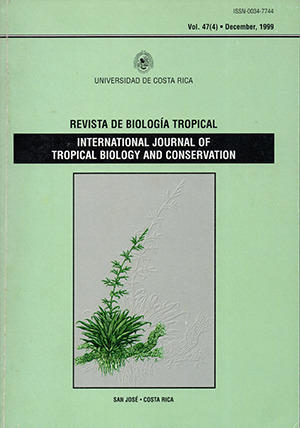Abstract
In the highlands of Chiapas, rapid habitat destruction and alteration threaten epiphytes. Presumably, forest transformation increases open and border-type vegetation, characterized by drier conditions tban those prevailing deeper in tbe foresto If so, mesic epiphytes should be especially affected. We investigated tbe role of water availability during tbe growtb of a population of tbe wide-ranging mesic C3 phytotelm bromeliad Tillandsia guatemalensis. Chiapas experiences a pronounced dry season from November to April when average monthly precipitation falls below 30 mm. T. guatemalensis observed in situ released seeds during this interval and high gerrnination rates occurred about seven weeks after tbe rainy weatber returned (over 93%, an observation confirmed in tbe laboratory). Many of tbe tiny seedlings disappeared before they could anchor to tbe substrate, probably flushed off by torrential rains. Over half oflhe seedlings comprising a naturally established population died during tbe dry season. High seedling mortality was also dedueed from tbe size-class structure of natural populations. Seedling mortality on bark taken from tbe tree base up to a height of 1.3 m of bigger trees is similar on two species of oak compared to two species of pine. These barks also possessed high water retaining capacity. Oak bark derived from higher up tbe tree, however, absorbed a larger amount of water per surface area and liberated water during a longer period of time tban the bark of Pinus tecunumanii taken from similar locations on tbe host tree. Additionally, the water retaining capacity of tbe bark of larger trees was generally greater. We suggest tbat such differences in water retaining capacity explain, at least in part, why epiphytes favor oaks, the lower parts of pine trees, and larger (older) trees. After tbe development of tbe phytotelm growtb form, mortality in a natural population falls. Our experirnents on phytotelm plants tbat appeared stressed after being transplanted out of tbeir original habitat suggest that nutrients are lirniting growth.##plugins.facebook.comentarios##

This work is licensed under a Creative Commons Attribution 4.0 International License.
Copyright (c) 1999 Revista de Biología Tropical
Downloads
Download data is not yet available.






